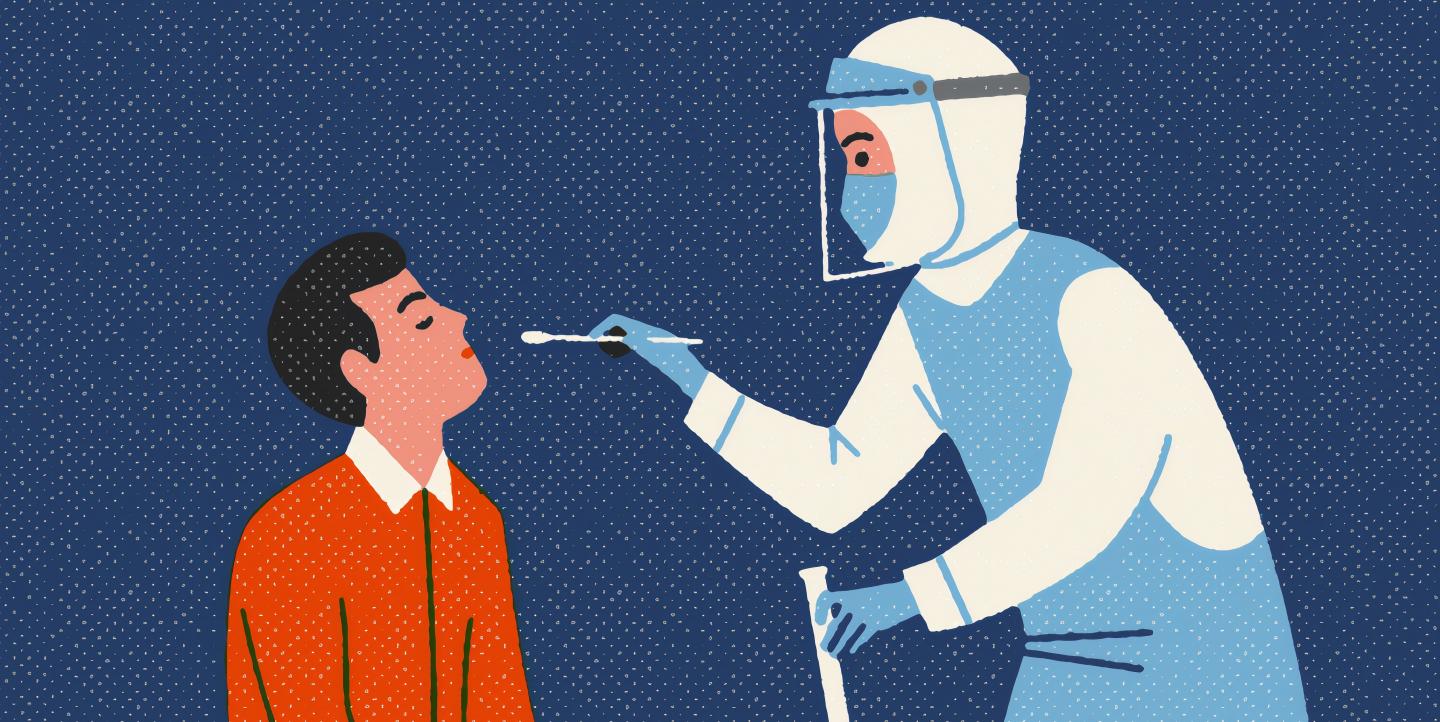Since the World Health Organisation (WHO) declared the novel Coronavirus (COVID-19) a pandemic, more and more journalists around the world have been pulled in to report on the frontlines of the global crisis.
The origins and spread of the virus, the response of governments and individuals and the rhetoric that has followed each pose a unique set of dilemmas for journalists navigating the unfamiliar. Understanding how to confront ethical considerations is important to present a balanced, fair and accurate report of what's happening during the pandemic.
Breaking news of death
When breaking news of death from complications from COVID-19 — especially when a prominent personality is involved — journalists should consider abandoning the thrill of breaking the story and take some time to check with the police or local authorities to see if the family of the deceased has been informed.
Behind the data, there are real lives who will be affected by the loss of a loved one. Journalists must be careful not to offend the sensibilities of the audience who they serve.
"Casualty figures are facts, and facts remain the cornerstone of journalism. I believe publishing casualty figures should be done with the right language, which shows sensitivity and respect for human life," says Eniola Akinkotu, a journalist on the frontline of reporting COVID-19 for Nigeria's most widely read newspaper, Punch.
In a story on ethical approaches to reporting about death, Sal Lalji, press and public relations manager at Samaritans, encourages journalists to check with families before using images from social media for a story. "When a person dies, if they're at the centre of a news story, it can actually be quite upsetting to see images from social networking sites that the media have taken, as these are not images that necessarily a bereaved family would like this individual to be remembered by.”
[Read more: How journalists are documenting loss during COVID-19]
Respecting sources' confidentiality
Journalists rely on sources to give leads and inside information, which they would otherwise not be able to access. The unprecedented nature of the COVID-19 coverage means a lot of information comes from people who are on the frontlines of the pandemic.
Every source should be asked if they can be named in a story, especially sources that could be sensitive to their information being released. This includes nurses, doctors, whistleblowers in hospitals and government facilities, disgruntled staff, sources who offer information on patient treatment and management, and people with knowledge of cover ups of casualty figures or infection rates.
Journalists should never assume that their sources want to be named. It is critical to seek their consent and reflect whatever permissions they give in the story.
It is also important to be sure that sources are not identified by context.
The News Manual offers an example: "The Prime Minister's secretary may have given you secret information in confidence or off the record. If you write the story attributing the details to ‘sources on the Prime Minister's personal staff’, you risk exposing your source, especially if there are only one or two people on the Prime Minister's personal staff. It might be better to attribute it to ‘sources in the Prime Minister's department’ if it is a big department... You need to balance the need to show that your sources are close to the centre of the information (and therefore reliable) against the need to protect the identity of a confidential source."
Maintaining the confidentiality of your source is important if you are to be trusted with more information in the future.
[Read more: Using data journalism to cover the pandemic in Latin America]
Verifying data
Can your data be verified? This is the most important question for journalists using data during the COVID-19 pandemic. There is a lot of data coming from different countries and organizations during the pandemic showing casualty figures, funding allocated for medical supplies and the impact of the virus on life in general.
But data can be flawed, misrepresented, lack context and even be concocted, therefore, journalists need to embrace thorough verification and interrogation.
In an article on coronavirus data visualizations, Joel Selanikio, a former investigator for the Center for Disease Control shows how maps used by CNN and The New York Times to "track the outbreak" can distort data.
Due to the design of one map, it looked like the entire country of China was engulfed by the virus in early February, but there were only about 35 thousand cases in a population of 1.4 billion people — affecting only 0.002% of people in China. In another example, a CNN map showing the “coronavirus’ global spread,”North America, Europe, Australia and Russia, along with China, are solidly infected. But at the time of publication, there were only a total of 12 cases, in the U.S., out of a population of 330 million.
The use of cumulative number of cases when reporting can be useful in comparing COVID-19 to other outbreaks like SARS, but cannot be relied on for real-time tracking because it never goes down. Many people have recovered, some have died and some are still receiving treatment, so it cannot be used to gauge the trend of the outbreak.
Journalists should make this distinction to ensure that the data they put out for their audience is not static and can be used to track real-time progression without underestimating or overestimating the impact of the pandemic.
Reporting racism and hate speech
Since COVID-19 took off, journalists have been faced with the challenge of reporting hate speech and racism by major world leaders and industry players. In the U.S., for example, President Donald Trump openly and repeatedly refers to COVID-19 as the “Chinese virus,” sparking fears of racially motivated hate actions.
The World Health Organization chief, Tedros Adhanom Ghebreyesus, said he had been subjected to racist comments and death threats for months because of his job overseeing the global response to the pandemic.
The media are less conscious, or perhaps more confused, about their responsibility covering newsmakers who advocate intolerance.This is partly because the issues are genuinely complex, and not amenable to simple ethical formulas. Best practice entails alerting society to agents of hate, but without giving them a free ride that exaggerates their importance and amplifies their views uncritically. It can be hard to strike the right balance, according to the Ethical Journalism Network.
Hate speech should never be celebrated in headlines so that the purveyors are not overly dignified. Reporting reactions to hate speech can be a better way of telling the story, says Akinkotu, the reporter for Punch in Nigeria, which has proved effective in his reporting.
COVID-19 reporting must be done with the utmost respect for human lives and sensibilities, especially at this time of great uncertainty.
Main image was created by Russell Tate for the United Nations Global Call Out To Creatives. CC-licensed by Unsplash.


